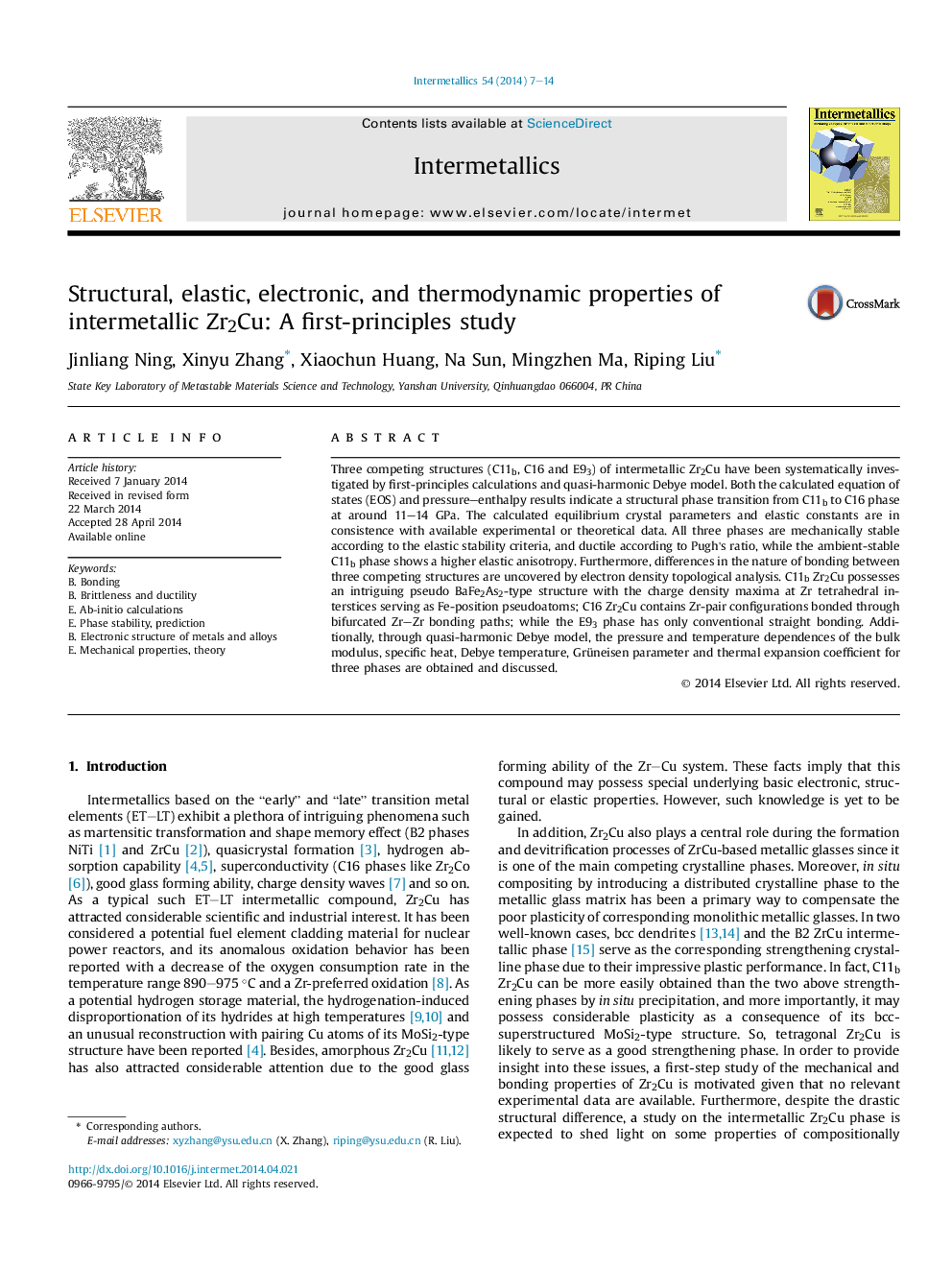| Article ID | Journal | Published Year | Pages | File Type |
|---|---|---|---|---|
| 7988503 | Intermetallics | 2014 | 8 Pages |
Abstract
Three competing structures (C11b, C16 and E93) of intermetallic Zr2Cu have been systematically investigated by first-principles calculations and quasi-harmonic Debye model. Both the calculated equation of states (EOS) and pressure-enthalpy results indicate a structural phase transition from C11b to C16 phase at around 11-14Â GPa. The calculated equilibrium crystal parameters and elastic constants are in consistence with available experimental or theoretical data. All three phases are mechanically stable according to the elastic stability criteria, and ductile according to Pugh's ratio, while the ambient-stable C11b phase shows a higher elastic anisotropy. Furthermore, differences in the nature of bonding between three competing structures are uncovered by electron density topological analysis. C11b Zr2Cu possesses an intriguing pseudo BaFe2As2-type structure with the charge density maxima at Zr tetrahedral interstices serving as Fe-position pseudoatoms; C16 Zr2Cu contains Zr-pair configurations bonded through bifurcated Zr-Zr bonding paths; while the E93 phase has only conventional straight bonding. Additionally, through quasi-harmonic Debye model, the pressure and temperature dependences of the bulk modulus, specific heat, Debye temperature, Grüneisen parameter and thermal expansion coefficient for three phases are obtained and discussed.
Keywords
Related Topics
Physical Sciences and Engineering
Materials Science
Metals and Alloys
Authors
Jinliang Ning, Xinyu Zhang, Xiaochun Huang, Na Sun, Mingzhen Ma, Riping Liu,
